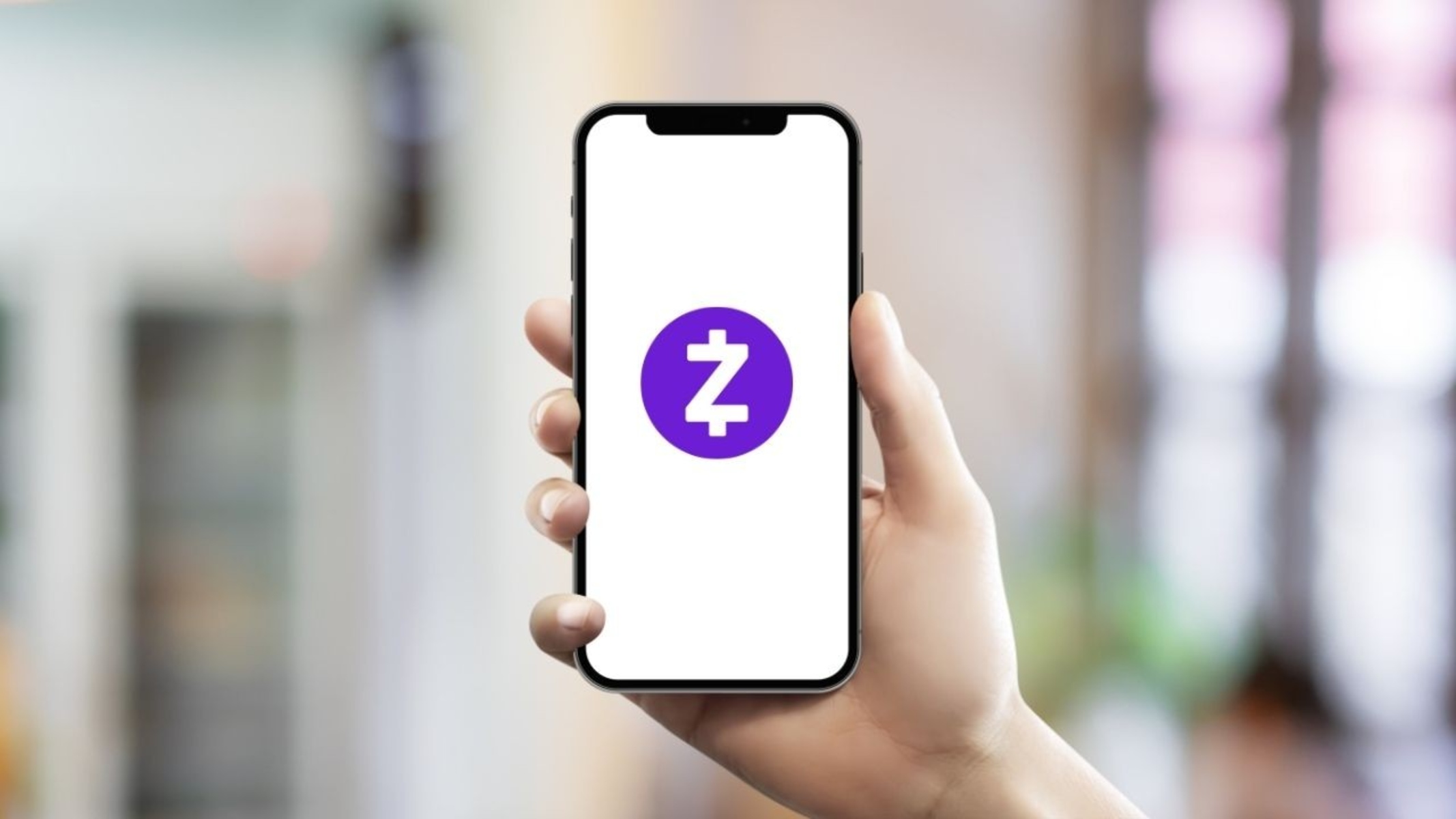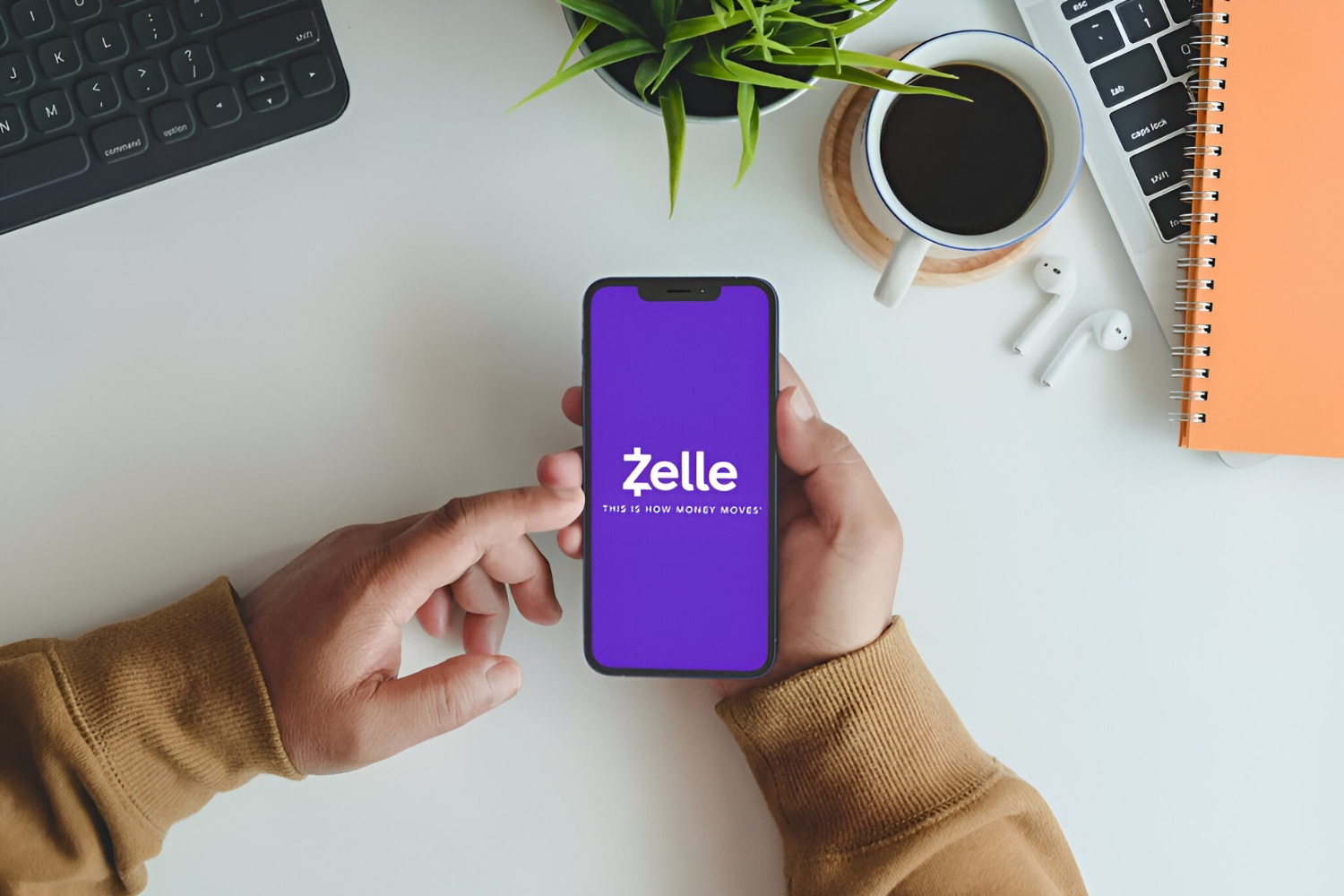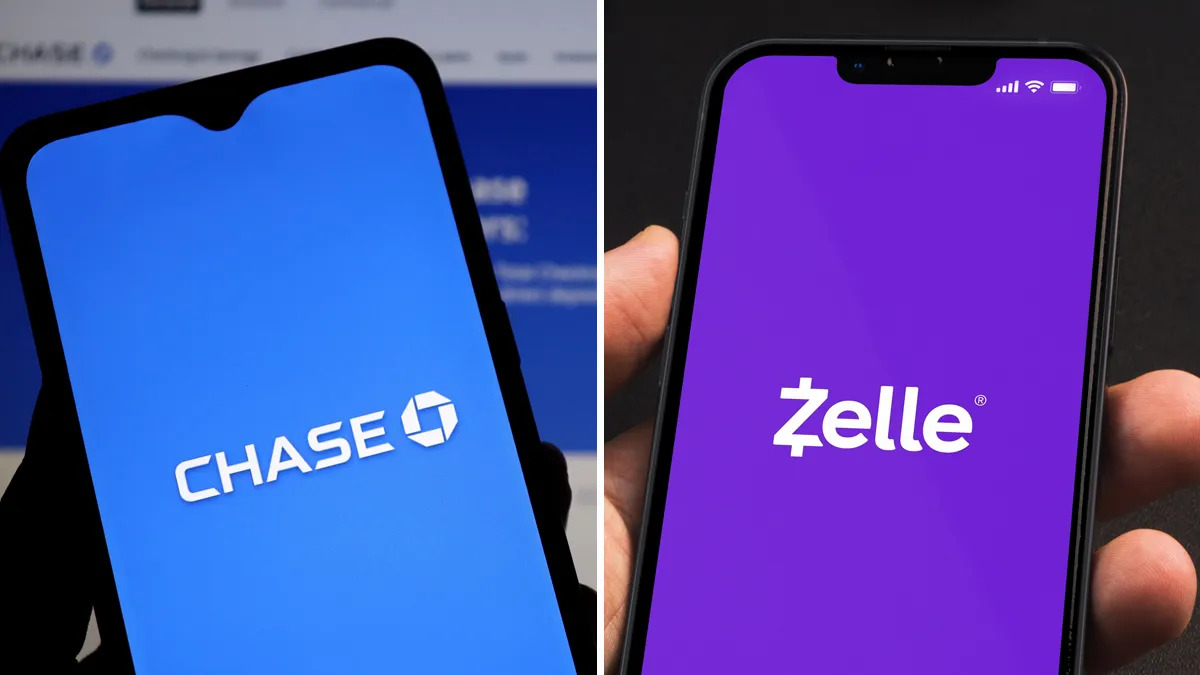Introduction
Welcome to this guide on how long it takes for a Zelle transfer to go through. If you’re new to the world of digital payments, you may be wondering what exactly Zelle is and how it works. Whether you’re sending money to friends or family or paying for goods and services, Zelle provides a convenient way to transfer funds securely.
Zelle is a popular person-to-person (P2P) payment service that allows users to send money directly from their bank accounts. It has gained significant traction in recent years due to its ease of use and widespread adoption by major banks in the United States. With Zelle, you can quickly and securely send money to anyone with a U.S. bank account using just their email address or phone number.
Understanding how Zelle works is crucial to managing your expectations when it comes to transfer times. While Zelle offers both instant and standard transfer options, the actual time it takes for a transfer to be completed can vary depending on several factors. In this guide, we will explore these factors and provide tips on how to ensure faster transfers.
Before we dive into the details, it’s essential to note that the information provided here is subject to change. Zelle’s transfer times can be affected by various external factors, and it’s always a good idea to confirm with your specific bank and Zelle directly for the most up-to-date information.
Now that we have a basic understanding of Zelle, let’s explore how the service works and what factors can influence the time it takes for a transfer to be completed.
What is Zelle?
Zelle is a popular peer-to-peer payment platform that allows users to send and receive money directly from their bank accounts. It enables seamless and secure transactions between individuals, making it a convenient alternative to traditional methods such as cash or checks.
Unlike other payment apps, Zelle works directly with your bank, eliminating the need to create a separate account or link to a third-party service. The platform is supported by over 1,000 banks and credit unions, making it easily accessible to a wide range of users across the United States.
One of the key advantages of using Zelle is its simplicity and ease of use. To get started, you need to have a bank account that is linked to your Zelle profile. Once your account is set up, you can send money to anyone who also has a Zelle account, regardless of their bank affiliation.
Payments sent through Zelle are typically processed within minutes, making it ideal for splitting expenses, paying back loans, or sending money to friends and family in urgent situations. Whether you need to cover your share of a dinner bill or contribute to a birthday gift, Zelle simplifies the process and eliminates the need for cash.
Furthermore, Zelle offers a secure platform for transferring funds. As it operates directly through your bank, it utilizes the same security measures and protocols implemented by your financial institution. This ensures that your personal and financial information remains protected throughout the transaction process.
To enhance the user experience, Zelle has partnered with various banking apps, allowing users to access the service directly through their existing banking applications. This integration enables users to send and receive money seamlessly, without the need to download a separate app or navigate through multiple platforms.
As Zelle continues to grow in popularity, the platform is constantly evolving and improving its services to meet the needs and expectations of its users. Whether you’re making a one-time payment or using Zelle for frequent transactions, the platform offers a convenient and efficient way to transfer funds securely.
How Does Zelle Work?
Zelle operates as a digital payment network that works directly with participating banks and credit unions. It enables users to send and receive money using their bank accounts, making the process seamless and convenient.
Here’s a step-by-step breakdown of how Zelle works:
- Enrollment: To use Zelle, you need to have a bank account with a participating financial institution. Most major banks and credit unions in the United States offer Zelle as a service. You can enroll in Zelle through your bank’s mobile app or website.
- Linking Accounts: Once enrolled, you will need to link your bank account to your Zelle profile. This ensures that Zelle can facilitate transactions directly from your account.
- Sending Payments: To send money, you simply need the recipient’s email address or phone number. You can initiate a payment through your bank’s Zelle interface or Zelle’s standalone app. Once you enter the recipient’s contact information, you’ll have the option to enter the payment amount and add an optional memo.
- Recipient Notification: Once you confirm the payment, the recipient will receive a notification informing them of the incoming funds. If the recipient is already enrolled in Zelle, the funds will be deposited directly into their bank account. If the recipient is not yet enrolled, they will receive instructions on how to sign up in order to receive the payment.
- Receiving Payments: If someone sends you money through Zelle, the funds will be deposited directly into your bank account. You’ll receive a notification from your bank informing you of the incoming payment.
- Transaction History: Zelle keeps a record of your payment history, allowing you to view past transactions and manage your finances conveniently.
It’s important to note that both the sender and recipient must have bank accounts linked to Zelle in order to use the service. Additionally, the availability and features of Zelle may vary depending on your specific bank or credit union.
By leveraging the infrastructure of participating banks, Zelle provides a fast and secure method of transferring money directly between accounts. Its integration with existing banking apps and websites ensures a seamless and user-friendly experience for both senders and recipients.
Factors Affecting Transfer Time
There are several factors that can impact the time it takes for a Zelle transfer to be completed. While Zelle strives to provide fast and efficient transfers, these factors can sometimes cause delays or variations in the overall transfer time. Here are the key factors to consider:
- Bank Processing Time: The speed at which your bank processes transactions can affect the transfer time. While Zelle transfers are typically processed within minutes, it’s important to note that the time it takes for your bank to receive and process the payment can vary.
- Recipient’s Enrollment: If the recipient of your payment is not yet enrolled in Zelle, they may need to complete the enrollment process in order to receive the funds. This can add additional time to the overall transfer process. It’s recommended to ensure that the recipient is already enrolled in Zelle to minimize any delays.
- Transaction Verification: In certain cases, Zelle may need to verify the transaction for security purposes. This can occur if the payment amount is significantly higher than usual or if there is suspicion of fraudulent activity. While these verifications are put in place to protect users, they can sometimes cause slight delays in the transfer process.
- Network Congestion: Like any digital platform, Zelle’s performance can be affected by network congestion or technical issues. During periods of high usage or system maintenance, transfer times may be slightly longer than usual.
- Operating Hours: While Zelle operates 24/7, some banks may have specific operating hours or limitations on when transfers can be processed. It’s important to check with your specific bank to understand their processing hours and any potential restrictions that may impact transfer times.
It’s worth noting that these factors are not exclusive to Zelle and can apply to other digital payment platforms as well. However, Zelle’s goal is to provide fast and efficient transfers, and in most cases, transfers are completed within minutes.
Understanding these factors can help manage expectations and allow for smoother transactions. While Zelle is designed to provide quick and reliable transfers, it’s important to consider these variables that can influence the overall transfer time.
Instant Transfers
Zelle offers instant transfers as a convenient option for users who need to send or receive money quickly. With instant transfers, the funds are typically available in the recipient’s bank account within minutes of the transaction being initiated.
Here are some key points to know about Zelle’s instant transfers:
- Availability: Instant transfers are available for eligible Zelle transactions. Not all banks or credit unions support instant transfers, so it’s important to confirm with your specific financial institution if this option is available.
- Transaction Limits: Instant transfers may have certain transaction limits imposed by your bank or Zelle. These limits can vary depending on factors such as your account status, transaction history, or the recipient’s bank.
- Fee: Instant transfers may come with an additional fee, depending on your bank or credit union’s policies. It’s important to review any associated fees before requesting an instant transfer.
- Benefits: Instant transfers offer the advantage of near-instantaneous access to funds for the recipient. This can be particularly helpful in urgent situations or when immediate payment is required.
- Considerations: While instant transfers provide speed and convenience, it’s essential to be mindful of the potential limitations. For example, if the recipient’s bank does not support instant transfers, the funds may be received through the standard transfer option, resulting in a longer processing time.
Overall, instant transfers through Zelle can be a valuable feature for users who need to send or receive money quickly. It’s important to check with your bank to understand the availability, limits, and any associated fees for instant transfers.
Keep in mind that instant transfers may not always be necessary or applicable for every transaction. For non-urgent transfers or when the recipient’s bank does not support instant transfers, standard transfers can still provide a reliable and efficient method of sending and receiving funds.
Standard Transfers
While Zelle offers instant transfers for those who need funds to be available immediately, the platform also provides a standard transfer option for users who have more flexibility with their timeline. Standard transfers may take slightly longer to process compared to instant transfers, but they still offer a convenient and efficient way to send and receive money.
Here’s what you need to know about Zelle’s standard transfers:
- Processing Time: Standard transfers typically take 1-3 business days to process, depending on factors such as the recipient’s bank, the time of day the transfer was initiated, and any potential delays or verifications needed.
- Availability: Standard transfers are available for all Zelle transactions, regardless of whether instant transfers are offered by your bank or credit union.
- No Additional Fee: Unlike instant transfers, standard transfers typically do not come with any additional fees. However, it’s always a good idea to confirm with your bank or Zelle to ensure there are no specific fees associated with standard transfers.
- Flexibility: Standard transfers provide flexibility in terms of when the funds are received. While they may take longer than instant transfers, they are still a reliable option for non-urgent payments or when immediate availability of funds is not critical.
- Tips for Faster Transfers: Even with standard transfers, there are steps you can take to speed up the transaction. Ensure that the recipient is enrolled in Zelle to eliminate any potential delays related to enrollment. Additionally, initiating the transfer during typical banking hours can help expedite the processing time.
Standard transfers through Zelle provide a convenient way to send and receive money without the need for physical cash or checks. While they may take slightly longer than instant transfers, they are still a reliable and efficient option for most transactions.
It’s important to keep in mind that the actual transfer time may vary depending on factors such as the recipient’s bank’s processing times and any potential verifications that may be required. However, Zelle’s goal is to provide timely and secure transfers, ensuring your money reaches its intended recipient quickly and hassle-free.
Typical Transfer Time
The typical transfer time for a Zelle payment can vary depending on various factors, including the recipient’s bank, the time of day the transfer is initiated, and any potential delays or verifications required. While Zelle aims to provide fast and timely transfers, it’s important to understand that the exact processing time may vary.
In general, Zelle transfers, whether instant or standard, are designed to be completed within minutes. However, it’s essential to consider any potential processing delays that may arise. Here are some factors that can affect the typical transfer time:
- Recipient’s Bank Processing Time: The recipient’s bank plays a significant role in the transfer process. If the recipient’s bank has a longer processing time or experiences any internal delays, it can impact the time it takes for the funds to be available in their account.
- Time of Day: The time of day the transfer is initiated can also influence the processing time. If a transfer is initiated outside of regular banking hours or during peak usage times, it may experience a slight delay. However, Zelle operates 24/7, allowing for transfers to be processed at any time.
- Verification Processes: In some cases, Zelle may need to verify certain transactions for security purposes. This can result in additional processing time, although it’s typically minimal. Transactions that are flagged for verification may require the recipient to take specific actions before the funds can be accessed.
- Network Congestion: Like any digital platform, Zelle’s performance can be impacted by network congestion or technical issues. During periods of high usage or scheduled maintenance, transfer times may be slightly longer than usual. However, Zelle invests heavily in maintaining a robust and reliable network infrastructure to minimize disruptions.
Despite these potential factors, Zelle’s goal is to provide prompt and efficient transfers. In most cases, transfers are completed within minutes, allowing for quick access to funds by the recipient. However, it’s important to be aware that occasional delays or variations in transfer times may occur.
For urgent payments or time-sensitive transactions, it’s recommended to consider Zelle’s instant transfer option, if available, as it ensures near-instantaneous availability of funds. Otherwise, standard transfers through Zelle remain a reliable choice for non-urgent payments, providing a convenient and secure method of transferring money.
Delays and Issues
While Zelle strives to provide fast and reliable transfers, there are instances where delays or issues may arise. It’s essential to be aware of these potential challenges to manage expectations and take necessary steps to address them.
Here are some common delays and issues that users may encounter when using Zelle:
- Recipient Enrollment: If the recipient of your payment is not yet enrolled in Zelle, they will need to complete the enrollment process to receive the funds. This can cause a delay in the transfer, as the recipient may need to follow the necessary steps to sign up for Zelle.
- Incorrect Information: Providing the wrong email address or phone number for the recipient can lead to delays in the transfer process. It’s crucial to double-check the contact information to ensure it is accurate before initiating the payment.
- Verification Processes: Zelle may initiate verification processes for certain transactions to ensure the security and legitimacy of the transfer. While these verifications are in place to protect users, they can result in additional processing time before the funds are available to the recipient.
- Bank Processing Time: The time it takes for a bank to process a Zelle transfer can vary. Factors such as the recipient’s bank’s processing times and any internal delays within the bank can impact the overall transfer time. It’s important to consider that individual bank policies and procedures may affect the speed of the transfer.
- Network Congestion or Technical Issues: Like any digital platform, Zelle may experience network congestion or technical issues that can result in delays or interruptions. These issues are usually mitigated quickly, but they can affect the overall transfer time during periods of high usage or system maintenance.
In the event that you experience any delays or encounter issues with a Zelle transfer, it’s advisable to reach out to Zelle’s customer support or your bank’s customer service for assistance. They can provide guidance and help resolve any concerns or questions you may have regarding the transfer.
By being aware of these potential delays and issues, you can make informed decisions when using Zelle and take proactive steps to ensure smoother and timelier transactions.
Tips for Faster Transfers
While Zelle strives to provide fast and efficient transfers, there are several tips you can follow to help expedite the process and ensure faster transfer times. By implementing these tips, you can increase the likelihood of timely payments and minimize any potential delays.
Here are some useful tips for faster Zelle transfers:
- Ensure Recipient Enrollment: Before initiating a transfer, confirm that the recipient is already enrolled in Zelle. This will help avoid any delays caused by the recipient needing to complete the enrollment process.
- Verify Contact Information: Double-check and confirm the accuracy of the recipient’s email address or phone number. Entering incorrect information can lead to delays or failed transfers.
- Timing: Consider the time of day you initiate the transfer. Transfers initiated during typical banking hours may have a better chance of faster processing. Avoid initiating transfers during weekends, holidays, or outside normal business hours, as it may result in additional processing time.
- Use Instant Transfers (if available): If the transfer is urgent and time is of the essence, check if your bank supports instant transfers through Zelle. By choosing the instant transfer option, you can ensure that the funds are available in the recipient’s account almost immediately.
- Keep Transaction Amounts Moderate: While Zelle does not impose strict limits on transaction amounts, sending very large amounts may require additional verification and approval, leading to potential delays. It’s best to keep transaction amounts within the normal range to expedite the transfer process.
- Check your Bank’s Policies: Familiarize yourself with your bank’s policies and guidelines regarding transfer times with Zelle. Certain banks may have specific procedures or limitations that can impact the transfer process.
- Be Mindful of Network Congestion: During peak usage times, such as evenings or busy holiday periods, network congestion may occur, leading to slower processing times. Plan your transfers accordingly to avoid potential delays during these times.
By following these tips, you can increase the speed and efficiency of your Zelle transfers. However, it’s important to note that while these tips can help expedite the transfer process, external factors such as the recipient’s bank and any necessary verifications can still influence the overall transfer time. It’s always a good idea to manage expectations and allow for reasonable processing times, especially for larger amounts or non-urgent transfers.
If you have any specific questions or concerns about the timing or status of a transfer, reach out to your bank’s customer support or Zelle directly for assistance and guidance.
Conclusion
Zelle provides a convenient and secure way to transfer money directly from your bank account to another individual’s account. Whether you need to split expenses, pay back a friend, or make a purchase, Zelle offers both instant and standard transfer options to meet your needs.
While Zelle strives to provide fast and efficient transfers, it’s important to consider factors that can affect the overall transfer time. Recipient enrollment, recipient’s bank processing time, verifications, network congestion, and the time of day can all influence how long it takes for a transfer to be completed.
By following the tips for faster transfers, such as ensuring recipient enrollment, verifying contact information, and considering timing, you can increase the chances of expedited transfers. Additionally, utilizing instant transfers when available, keeping transaction amounts moderate, and being aware of network congestion can contribute to a smoother transfer experience.
Remember, Zelle aims to process transfers within minutes, but occasional delays or variations can occur. It’s important to manage expectations and allow for reasonable processing times, especially for larger amounts or non-urgent transfers. If you encounter any issues or have questions, don’t hesitate to contact Zelle’s customer support or your bank’s customer service for assistance.
Overall, Zelle provides a reliable and efficient way to send and receive money digitally. With its seamless integration with banks and user-friendly interface, it has become increasingly popular for person-to-person transfers. Whether you’re paying back a friend, splitting bills, or making a purchase, Zelle offers a convenient and secure platform for transferring funds quickly and conveniently.

























